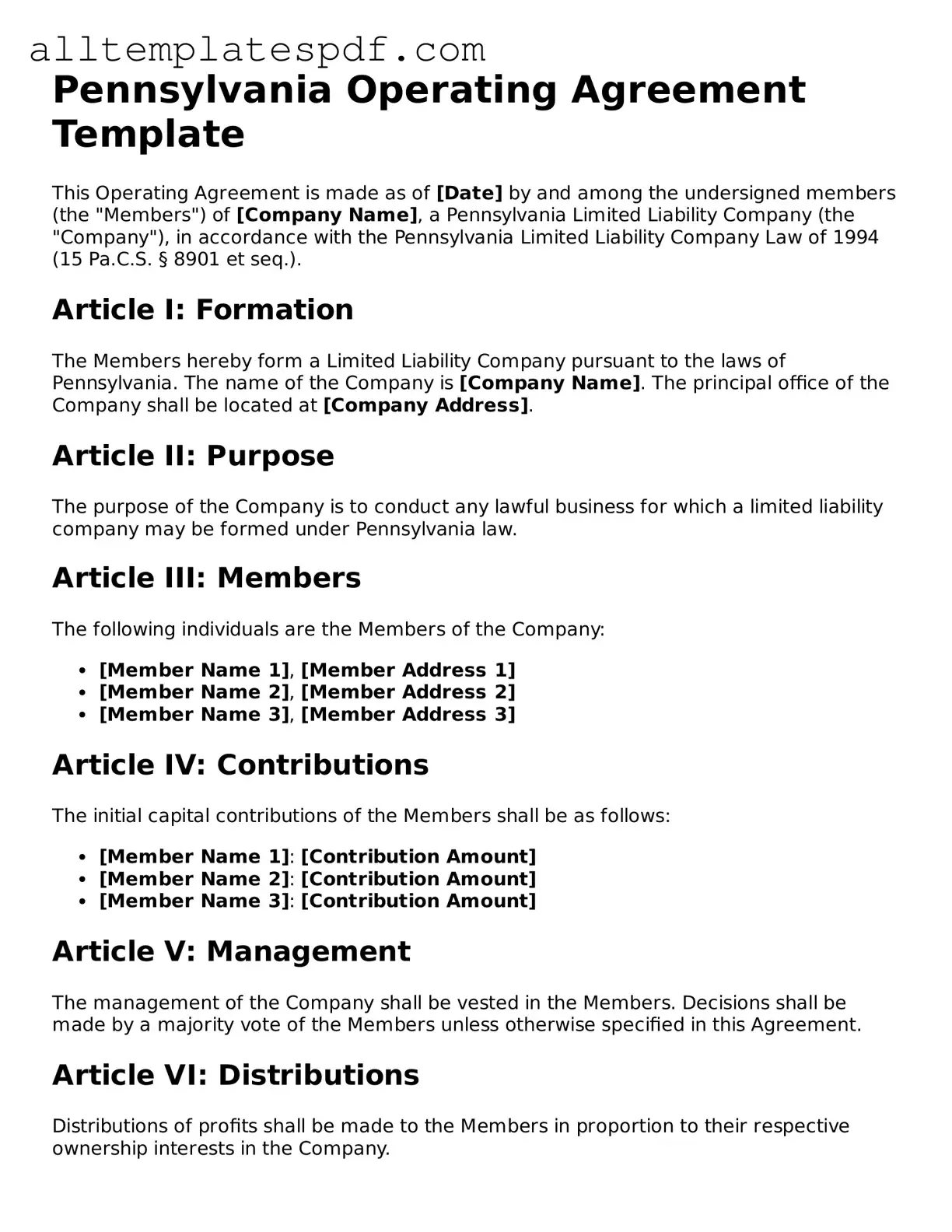Filling out the Pennsylvania Operating Agreement form can be a straightforward process, but many people make common mistakes that can lead to complications down the line. One frequent error is not including all members' names. Each member should be clearly listed to ensure that everyone’s rights and responsibilities are recognized. Omitting a member can create confusion and legal issues later.
Another mistake is failing to specify the management structure. Some people assume that the default structure will apply, but it’s crucial to outline whether the members will manage the business or if a designated manager will take charge. This decision affects how the business operates and how decisions are made.
Inaccurate or incomplete information about the business purpose is also a common pitfall. The purpose should be clearly defined to avoid ambiguity. A vague description can lead to misunderstandings about the business’s activities and objectives, which may affect legal protections and tax statuses.
Many individuals overlook the importance of detailing the capital contributions. Each member's initial investment should be documented. This information is vital for understanding ownership percentages and profit distribution. If contributions are not clearly stated, disputes can arise over financial expectations.
Another mistake is neglecting to outline the procedures for adding or removing members. It’s essential to have a clear process in place. Without this, the business may face difficulties if changes in membership occur, leading to potential conflicts and operational disruptions.
Some people also forget to include provisions for handling disputes. It’s wise to establish a clear method for resolving conflicts among members. This can save time and money by preventing disputes from escalating into legal battles.
Failing to update the agreement when circumstances change is another common oversight. Life events, such as new members joining or existing members leaving, should prompt a review and potential revision of the Operating Agreement. Keeping the document current is vital for its effectiveness.
Lastly, not having the agreement reviewed by a professional can be a significant mistake. While it may seem like an unnecessary expense, consulting with a legal expert can help ensure that the agreement complies with state laws and effectively protects the interests of all members involved.
